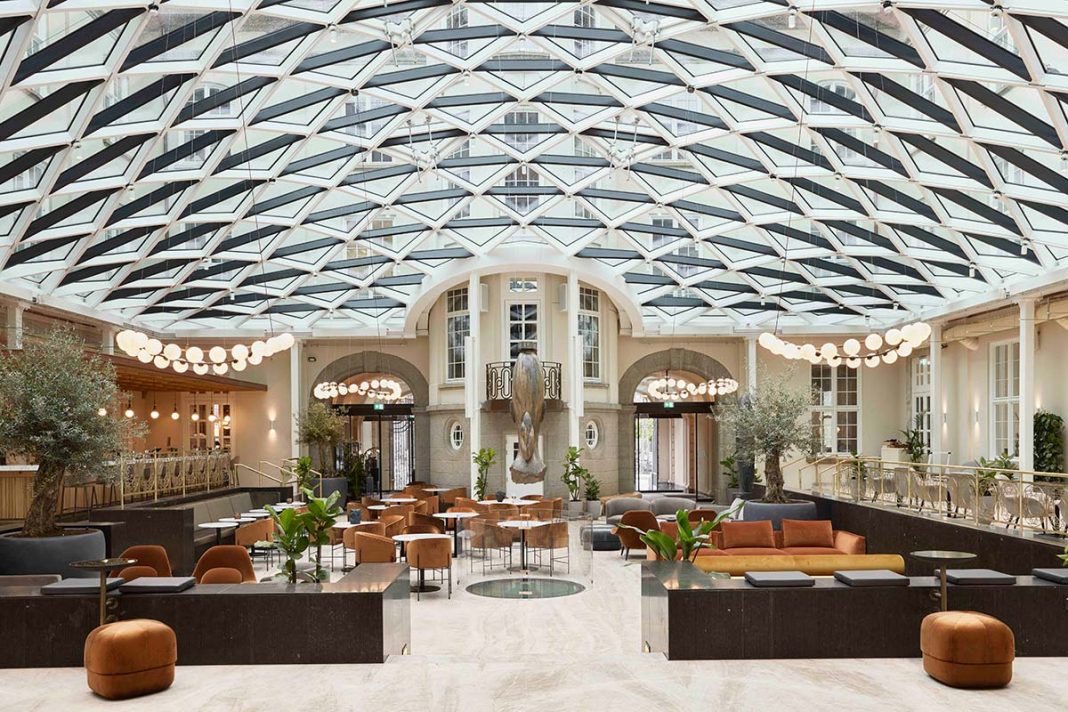DATA SHEET
Client: Strawberry Properties
Hotel operator: Nordic Hotels & Resorts
Architectural design: Krook & Tjäder
Interior design: Earth Studio, Epicurean, Goddard Littlefair, Shamballa Jewels, Universal Design Studio
Furnishings: Brdr. Petersen, Carl Hansen & Søn, Fogia, Fredericia, Fritz Hansen, Getama, House of Finn Juhl, J.L. Møllers Møbelfabrik, Menu, Mobel Copenhagen, Skandinavisk
Lighting: Astep, Flos, Louis Poulsen
Bathrooms: Axor, Nero Marquina
Photo credits: Andy Liffner, Stine Christiansen
With a prime location near the Tivoli Gardens and the Meatpacking District, Villa Copenhagen features 390 rooms along with various other spaces and services. The hotel was created out of the restoration and conversion project by Krook & Tjäder of the former post and telegraph headquarters, an architectural landmark of the Danish capital built in 1912 by architect Heinrich Wenck.
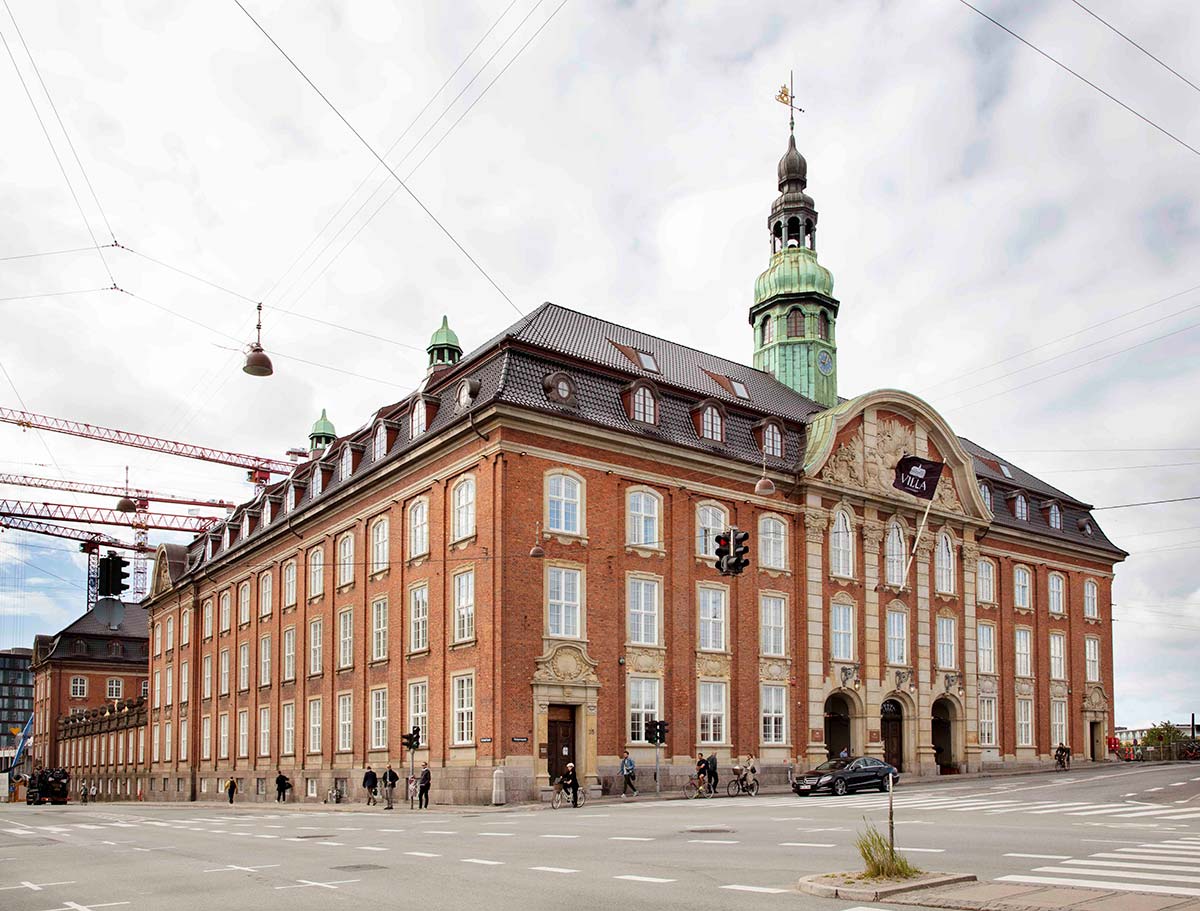
Historical references abound in the neo-Baroque facades and the team-designed yet cohesive interior, whose atmosphere is welcoming, celebrating traditional and contemporary Scandinavian design. Soft colors, minimalist furniture, sustainable solutions, and indoor gardens inspire a sense of calm, well-being and invite sociability.
London-based Universal Design Studio designed most of the public areas – the hallways and staircases – and the 390 guest rooms. Goddard Littlefair, also from London, accentuated the building’s architecture and historical aspects and worked in contemporary Nordic details. Danish architect Eva Harlou of Earth Studio designed the “ultra sustainable” Earth Suite featuring recycled materials and fabrics and eco-friendly furniture by Danish manufacturer Mater Design.
Finally, Epicurean creative professionals worked with Goddard Littlefair to develop the identity of the restaurants, lounge bar, multi-functional Playroom and rooftop Pool Bar.
The north-facing entrance leads to a square courtyard furnished by Shamballa Jewels and topped by a faceted glass ceiling. In keeping with the building’s history, restored original details join Scandinavian design in the bright, informal dining and communal areas. The former mail-sorting room next to the railway tracks now holds the breakfast cafe called Public and the hotel’s Rug Bakery. Designers used vintage photographs to adapt the spaces, keeping the original arches and adding lights with draped flex, copper-reeded wall paneling and original glazed brickwork.

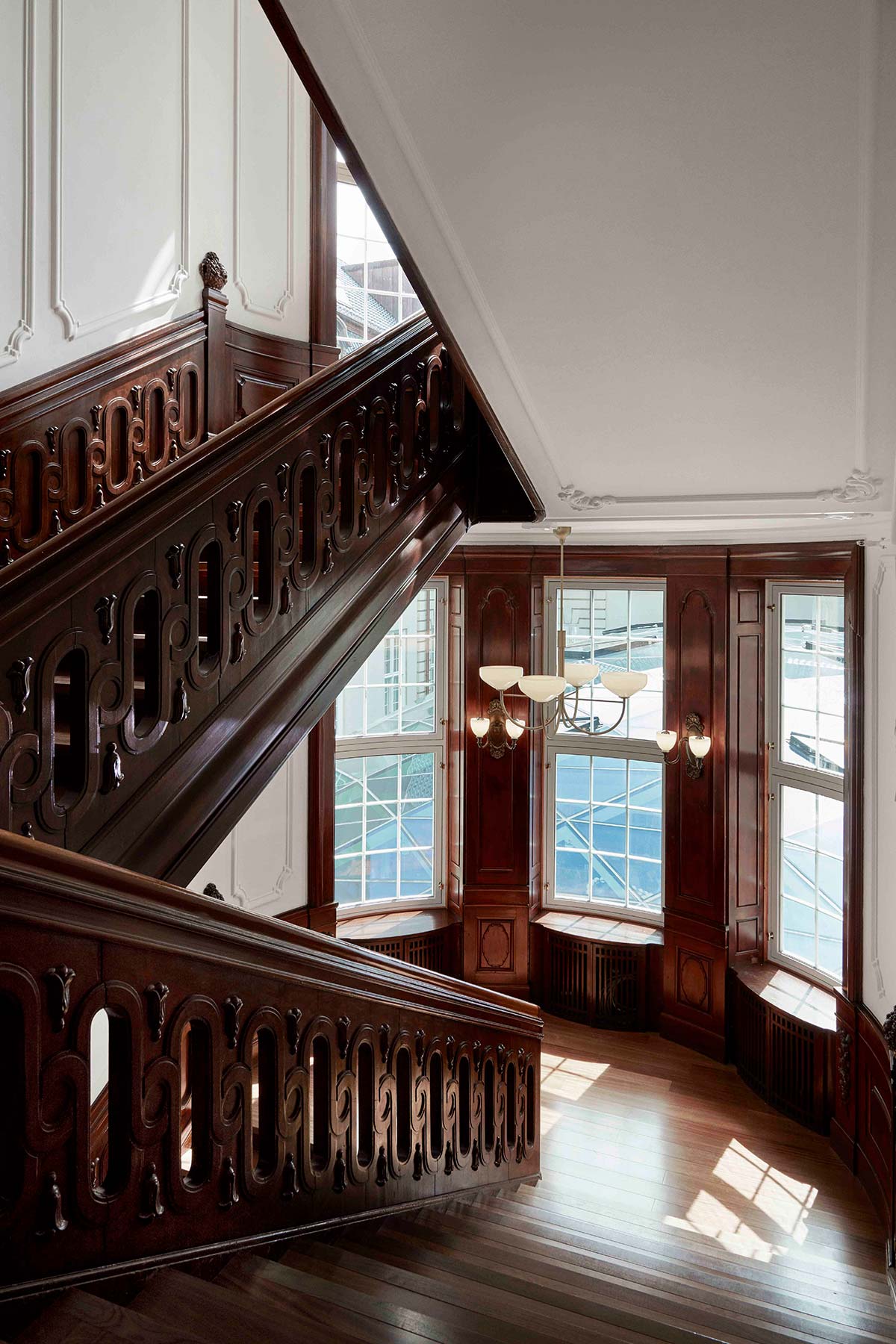



The understated, mid-century-inspired design of bar-restaurant Kontrast includes an original post-office counter, exposed brick walls and various kinds of seating around the open steel kitchen. Littlefair describes T37, whose name abbreviates the hotel’s address Tietgensgade 37, as a “strong, stoic and grandiose space.” Occupying the former post office, it features sturdy Arabesque marble columns, a restored coffered ceiling, original wood paneling and a decorated entrance.
With its Corten-steel pergolas, the Pool Bar is a rooftop retreat overlooking one of Villa’s courtyards. The 25-meter rooftop pool designed by Krook and Tjader Architects is intrinsically sustainable, heated year-round by excess heat from the kitchen refrigerator. Copper from the old roof was used to cover the bar counter, exemplifying Epicurean’s design approach of exploiting a space’s unique features like position, former purpose and existing materials.

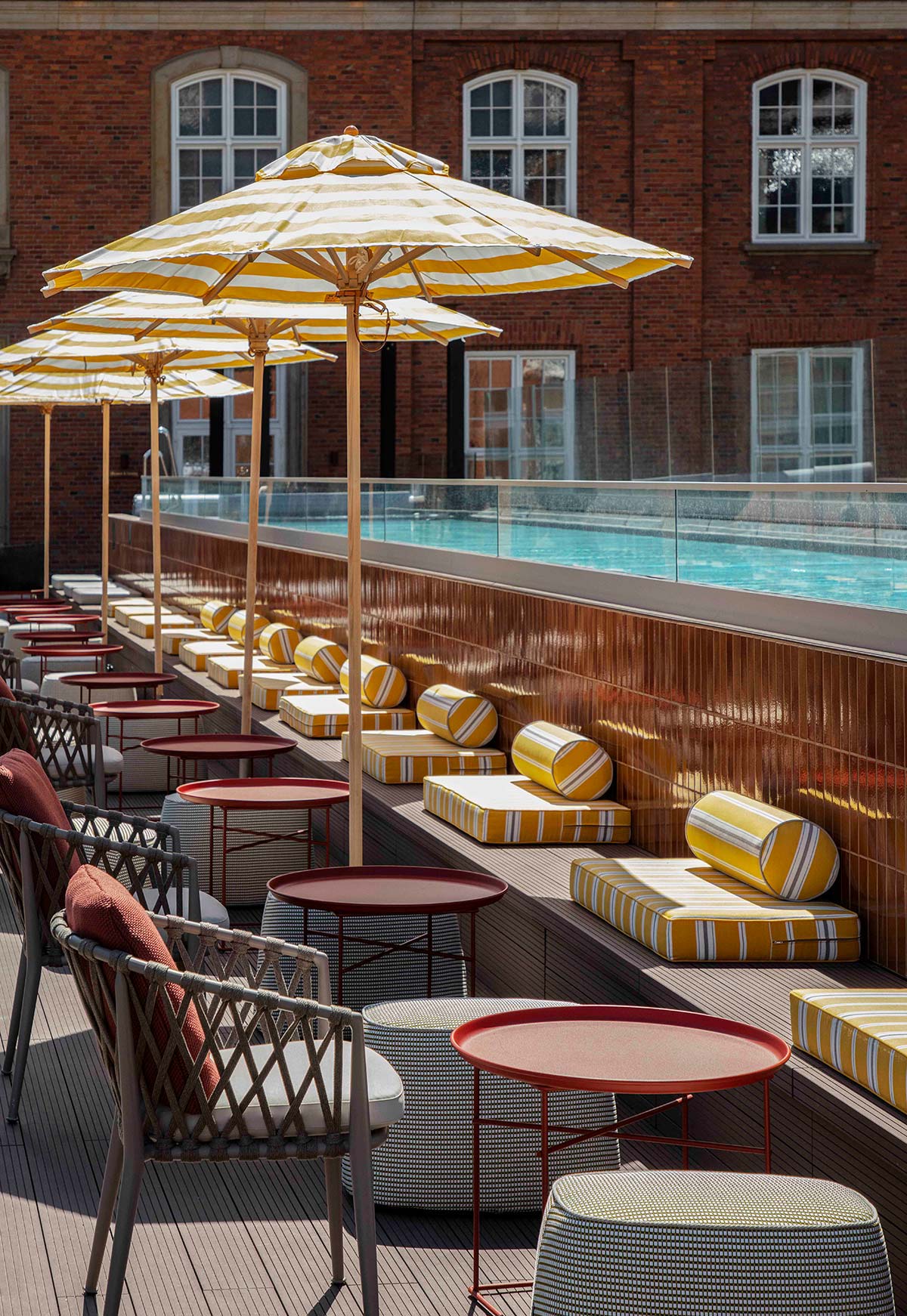
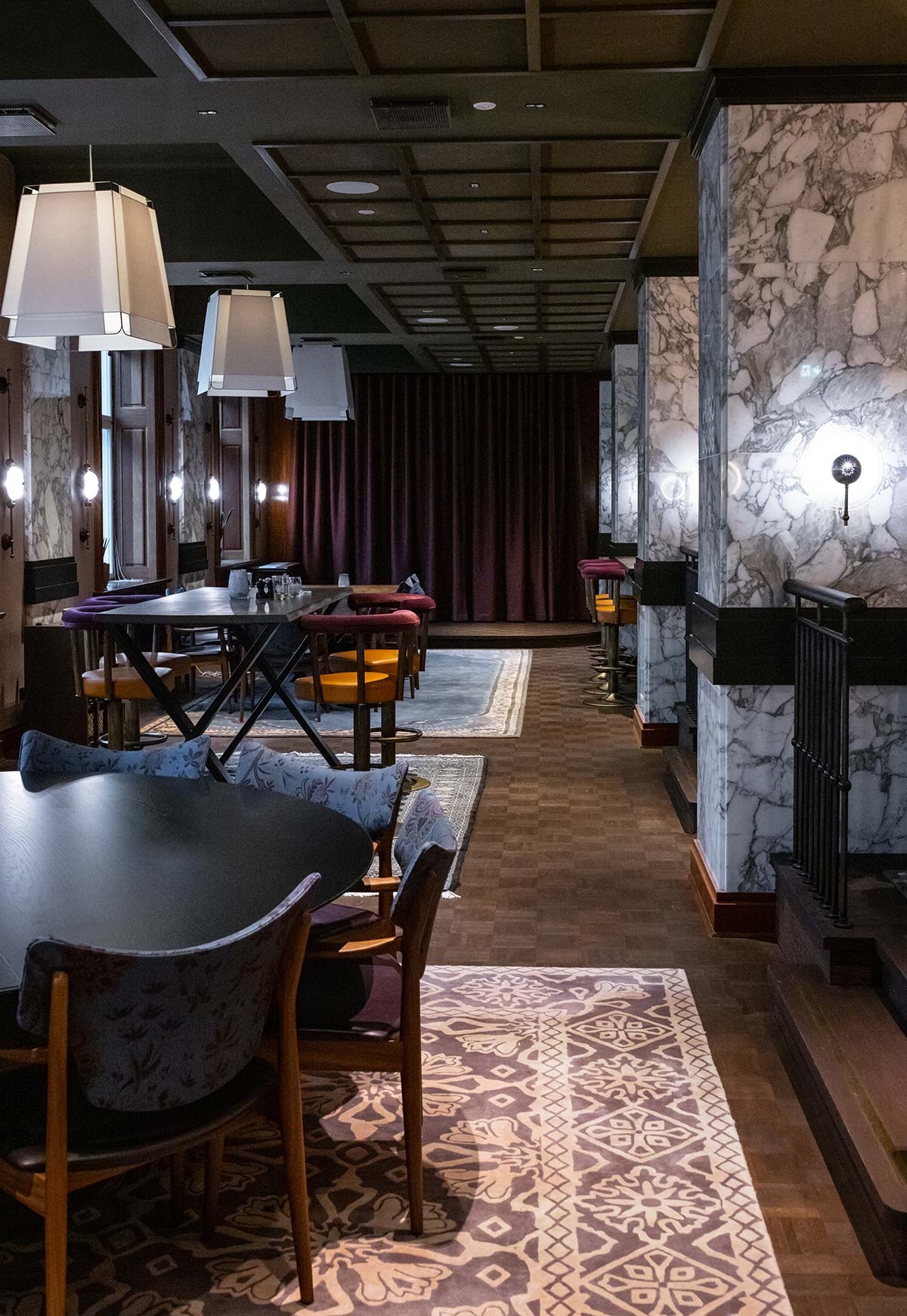
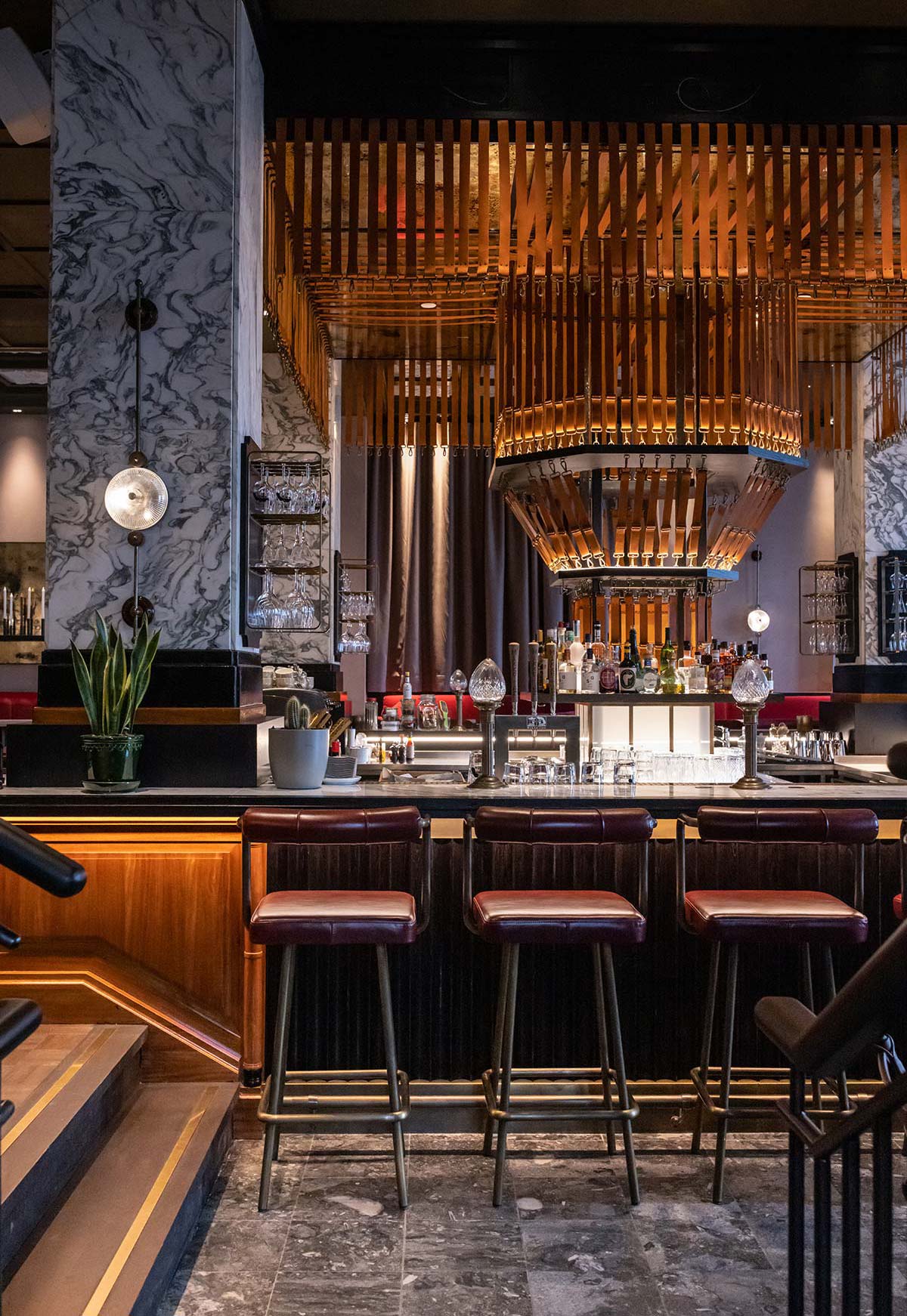
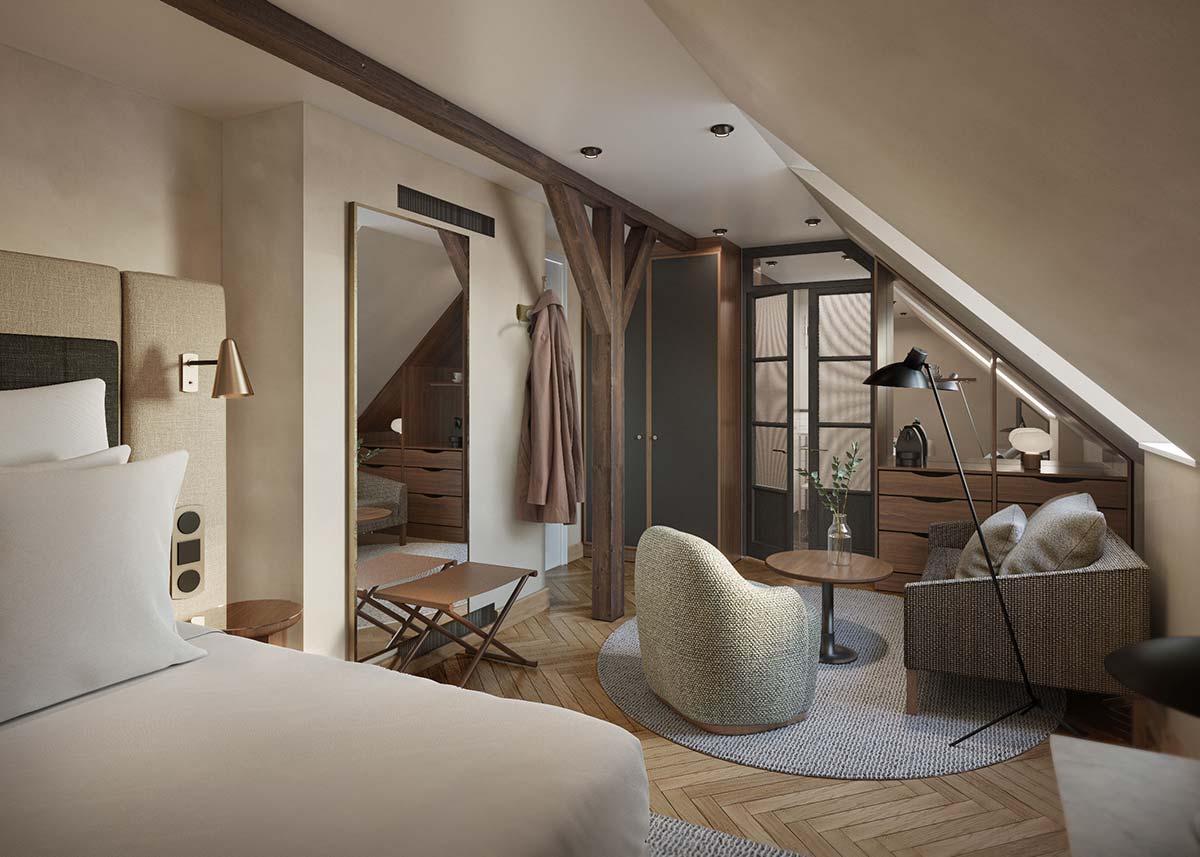
Inspired by the romance of majestic Copenhagen residences, Universal Design Studio reinstalled or restored elements like large window frames, wooden beams, herringbone floors, doors and moldings in the rooms and suites.
The color schemes are strongly influenced by the “silent” paintings of Master Vilhelm Hammershøi, the father of Danish interior art, translating his austere, elegant use of light into a palette of warm, delicate colors and muted shades of ocher, brick, gray-green and copper. For each different room type, Universal combined a selection of classic furnishings with classic and contemporary ones. It combined custom-made or re-released furnishings and lighting features, drawing from Danish design whose functional yet humanist tradition, with original pieces by Finn Juhl, Ole Wanscher, Nanna Ditzel, Niels Otto Møller, Hans Wegner, and Borge Morgensen, as well as the Italian designer Gio Ponti.


